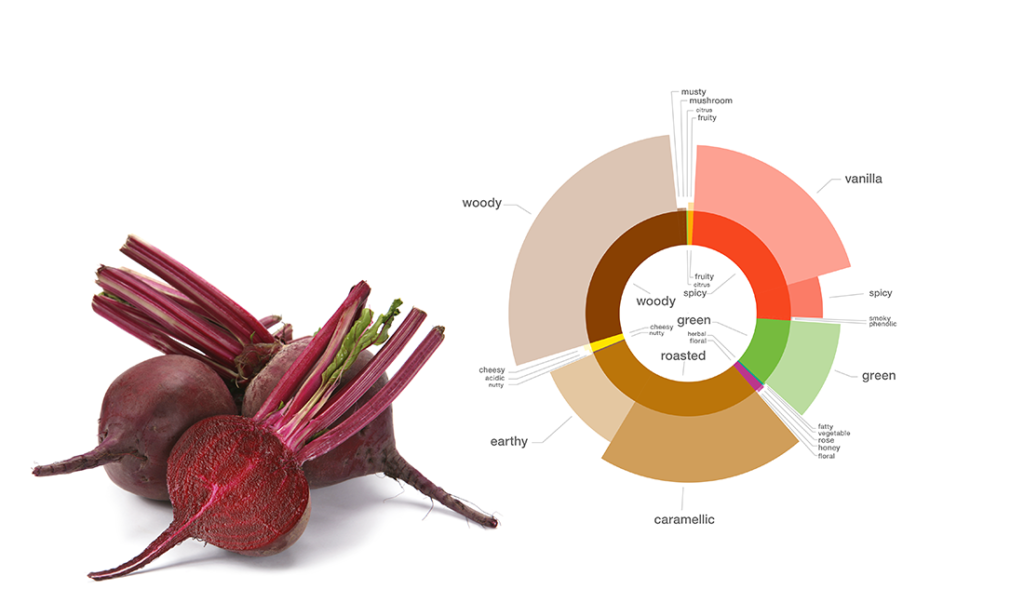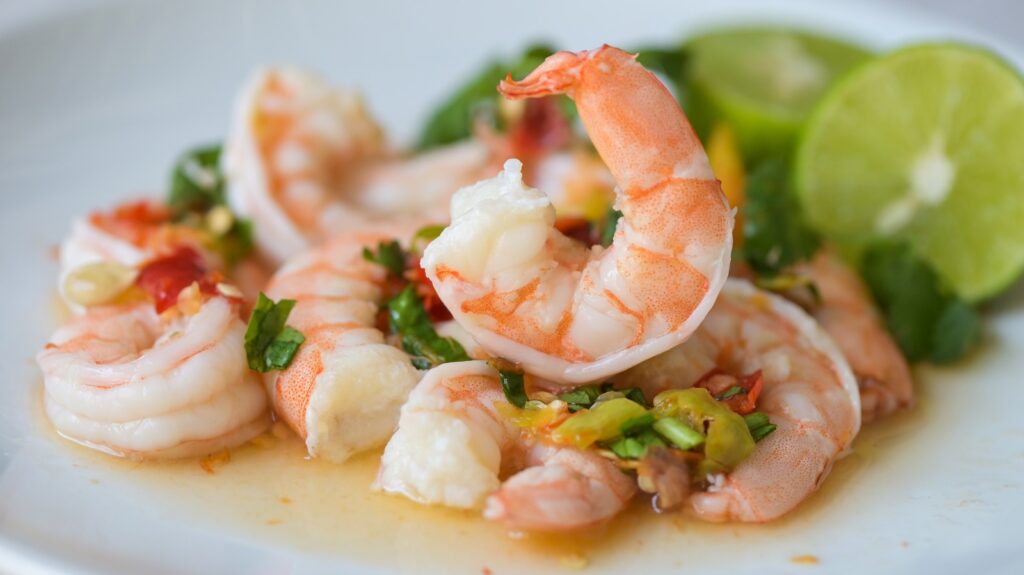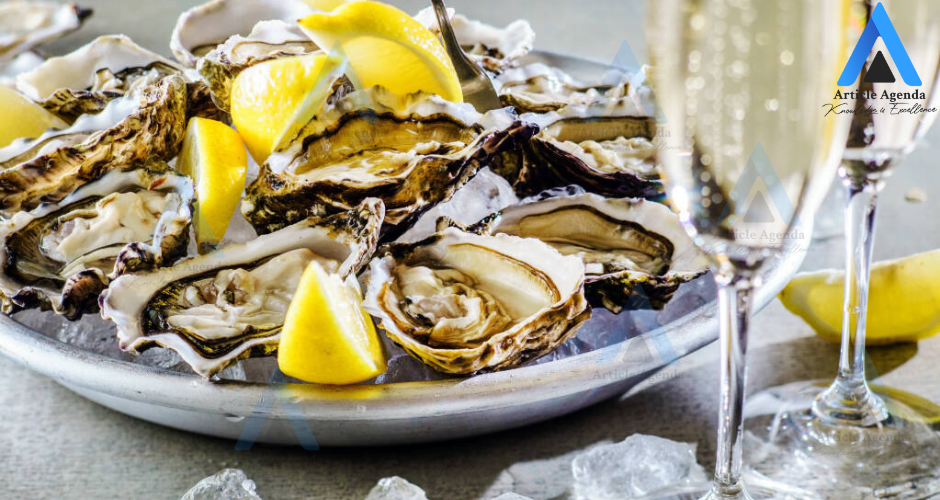Are you a food enthusiast passionate about discovering new and exciting flavour combinations? If so, prepare to embark on a culinary journey that will tantalize your taste buds and awaken your senses. The art of combining different ingredients to create harmonious and unforgettable flavours is celebrated in the world of food pairing. From classic pairings like wine and cheese to the more adventurous combinations of unexpected ingredients, there is an endless array of possibilities to explore. This article will delve into the fascinating world of food pairing, uncovering the secrets behind creating unforgettable meals that will leave a lasting impression on your palate. Whether you’re a seasoned chef or a curious home cook, join us as we dive into the science, creativity, and pure joy of savouring the flavour through the art of food pairing. Get ready to elevate your dining experience and discover a new world of culinary delight.
Table of Contents
- The Science Behind Food Pairing
- How to Pair Flavors Effectively
- Classic Food and Wine Pairings
- Unconventional Food Pairings That Work Surprisingly Well
- The Role of Spices and Herbs in Food Pairing
- Food Pairing for Specific Cuisines
- Food Pairing for Different Dietary Preferences
- Tips for Experimenting with Food Pairing at Home
- Conclusion: Elevate Your Culinary Experience with Food Pairing

The Science Behind Food Pairing
Food pairing is not just about randomly combining ingredients; it is a science that involves understanding how different flavours interact. The key to successful food pairing lies in finding complementary or contrasting flavours that enhance the overall taste of a dish. It is achieved by considering factors like taste, texture, aroma, and even the molecular structure of the ingredients.

When it comes to taste, our taste buds can detect five primary flavours – sweet, salty, sour, bitter, and umami. Each of these flavours has its unique characteristics and can be used to create a balance or contrast in a dish. For example, pairing a sweet ingredient with something salty can create a delightful contrast that excites the palate.
Texture also plays a crucial role in food pairing. Combining ingredients with different textures can add depth and complexity to a dish. For instance, pairing a crispy element with something creamy can create a pleasing contrast that adds interest to the overall eating experience.
Aroma is another crucial aspect of food pairing. Certain ingredients have aromatic compounds that can complement or enhance the flavours of other elements. For example, the floral aroma of lavender can beautifully complement the citrusy flavours of lemon in a dessert.
In addition to these factors, the molecular structure of ingredients can also influence how they interact with each other. Specific molecules in food can either enhance or suppress the flavours of different elements, leading to a more balanced and harmonious dish.
Understanding the science behind food pairing is the first step towards creating memorable meals. By considering taste, texture, aroma, and molecular structure, you can unlock a new world of flavour combinations that will elevate your culinary creations.
How to Pair Flavors Effectively
Pairing flavours effectively is about finding the perfect balance between complementary and contrasting elements. Here are some tips to help you create harmonious flavour combinations:

- Start with a focal point: Choose one ingredient or flavour that will be the star of your dish. It will serve as the focal point around which other flavours will revolve. For example, if you’re creating a dish around a juicy steak, you can choose flavours that enhance the natural richness of the meat.
- Consider the intensity of flavours: When pairing flavours, it’s essential to consider the power of each ingredient. Balance intense flavours with milder ones to avoid overpowering the palate. For example, if you’re using an intensely flavoured cheese, pair it with a milder accompaniment, like fresh fruits.
- Look for complementary and contrasting elements: Complementary flavours share similar characteristics and enhance each other. Contrasting flavours, however, create a balance by providing a counterpoint. Experiment with both to create exciting and well-rounded dishes. For example, pairing a tangy tomato sauce with creamy pasta can create a delightful contrast.
- Remember texture: Texture can add a new dimension to a dish. Consider how different textures can enhance or contrast with each other. For instance, pairing a crunchy topping with a smooth soup can create a satisfying textural experience.
- Trust your instincts and experiment: While there are guidelines to follow, food pairing is ultimately a creative process. Trust your taste buds, and don’t be afraid to try unconventional combinations. You never know when you might stumble upon a winning combination that surprises and delights.
By following these tips and exploring different flavour combinations, you can become a master of food pairing and create unforgettable dishes that leave a lasting impression on your guests.
Read More: Best Cake For Occasions
Classic Food and Wine Pairings
When it comes to food pairing, one classic combination that immediately comes to mind is food and wine. For centuries, people have enjoyed the harmonious union of flavours that wine brings to a meal. Here are some classic food and wine pairings that you can try:

1. Red wine and red meat: The rich, bold flavours of red wine complement the richness of red meat. Whether it’s a juicy steak, a flavorful roast, or a hearty stew, pairing it with a full-bodied red wine like Cabernet Sauvignon or Syrah can elevate the dining experience.
2. White wine and seafood: White wine’s light, crisp flavours complement the delicate flavours of seafood. Whether you enjoy a plate of fresh oysters, grilled fish, or seafood pasta, pairing it with a refreshing white wine like Sauvignon Blanc or Chardonnay can enhance the dish’s flavours.
3. Sparkling wine and appetizers: With its effervescence and acidity, Sparkling wine is a versatile choice for pairing with appetizers. Whether you’re serving cheese and charcuterie, bruschetta, or canapés, the bubbles in sparkling wine can cleanse the palate and prepare it for the next bite.
4. Dessert wine and desserts: When pairing wine with desserts, matching the sweetness levels is essential. Decadent, sweet desserts like chocolate cake or crème brûlée pair beautifully with a sweet dessert wine like Port or Sauternes.
These are just a few examples of classic food and wine pairings. However, feel free to experiment and find your favourite combinations. The key is to find flavours that complement and enhance each other, creating a harmonious and enjoyable dining experience.
Unconventional Food Pairings That Work Surprisingly Well
While classic food pairings have stood the test of time, there’s also room for experimentation and exploration. Sometimes, the most unexpected combinations can create genuinely remarkable flavours. Here are some unconventional food pairings that may surprise you:
1. Chocolate and cheese: While it may sound unusual, combining dark chocolate and aged cheese can create a harmonious balance of sweet and savoury flavours. Try pairing a piece of rich, dark chocolate with tangy blue cheese for a taste sensation that will leave you wanting more.
2. Watermelon and feta: The refreshing sweetness of watermelon pairs surprisingly well with the salty tang of feta cheese. Add some fresh mint and a drizzle of balsamic glaze, and you have a simple yet delicious summer salad that is both refreshing and satisfying.
3. Bacon and maple syrup: The salty, smoky flavours of bacon are beautifully complemented by maple syrup’s sweet caramel notes. Drizzle some maple syrup over crispy bacon for a breakfast treat that perfectly balances sweet and savoury.
4. Strawberries and balsamic vinegar: A drizzle of tangy balsamic vinegar can enhance strawberries’ natural sweetness. The acidity of the vinegar cuts through the sweetness of the berries, creating a delightful contrast of flavours.
These are just a few unconventional food pairings that can surprise and delight your taste buds. Be bold and think outside the box and experiment with different combinations. You never know when you might discover a new favourite flavour combination.
The Role of Spices and Herbs in Food Pairing
Spices and herbs are the secret weapons of flavour pairing. They can transform a dish and add depth and complexity to its flavours. Here are some ways spices and herbs can enhance food pairing:
1. Enhancing flavours: Spices and herbs can enhance ingredients’ natural flavours. For example, adding a pinch of cinnamon to a dish can bring out the sweetness of certain fruits like apples or pears.
2. Balancing flavours: Spices and herbs can also help balance flavours in a dish. For instance, if a word is too spicy, adding a cooling herb like mint or cilantro can help balance the heat.
3. Creating contrasts: Spices and herbs can create differences in a dish by providing a counterpoint to specific flavours. For example, adding chilli powder to a sweet dessert can create a delightful contrast between heat and sweetness.
4. Adding complexity: Spices and herbs can add layers of flavour and complexity to a dish. For example, adding herbs like basil, oregano, and thyme can transform a simple tomato sauce into a rich, aromatic masterpiece.
When using spices and herbs in food pairing, it’s essential to consider their intensity and compatibility with other ingredients. Some spices and herbs have intense flavours that can overpower other ingredients, so using them judiciously is necessary. Experiment with different combinations to find the perfect balance and create dishes that are bursting with flavour.
Food Pairing for Specific Cuisines
Food pairing is not limited to Western cuisine; it can be applied to any cuisine worldwide. Each cuisine has unique flavour profiles and ingredients that can be paired in exciting and delicious ways. Here are some examples of food pairing for specific cuisines:
1. Asian cuisine: Asian cuisine is known for its bold flavours and aromatic spices. Pairing soy sauce, ginger, garlic, and chilli peppers can create a harmonious balance of sweet, salty, spicy, and umami flavours. For example, pairing soy-marinated grilled chicken with a side of stir-fried vegetables creates a satisfying and flavorful meal.
2. Mediterranean cuisine: Mediterranean cuisine is all about fresh, vibrant flavours. Pairing olive oil, lemon, garlic, rosemary, and oregano can create a delightful combination of tangy, herbal, and savoury flavours. For example, pairing grilled fish with a lemon-herb sauce and a side of roasted vegetables creates a light and flavorful Mediterranean feast.
3. Indian cuisine: Indian cuisine is known for its complex spice blends and rich, aromatic flavours. Pairing ingredients like cumin, coriander, turmeric, and cardamom can create a symphony of comforting and exciting flavours. For example, pairing a spicy curry with fragrant basmati rice and cooling raita creates a balanced and satisfying Indian meal.
These are just a few examples of how food pairing can be applied to specific cuisines. Each cuisine has unique flavour combinations and ingredients that can be explored and celebrated. By understanding the flavour profiles of different cuisines, you can create authentic and delicious dishes.
Food Pairing for Different Dietary Preferences
Food pairing is not limited to omnivorous diets; it can also be applied to vegetarian, vegan, and gluten-free diets. With creativity and experimentation, you can create flavorful and satisfying meals catering to different dietary preferences. Here are some tips for food pairing for other nutritional choices:
1. Vegetarian food pairing: Vegetarian cuisine celebrates the flavours and textures of plant-based ingredients. Pairing ingredients like beans, lentils, tofu, and various vegetables can create a satisfying vegetarian meal. For example, pairing roasted vegetables with a creamy tahini dressing and sprinkling toasted nuts makes a flavorful and nutritious vegetarian dish.
2. Vegan food pairing: Vegan cuisine takes vegetarian food pairing to the next level by eliminating all animal products. Pairing plant-based proteins, grains, legumes, and vegetables can create delicious and nutritious vegan meals. For example, pairing quinoa with roasted chickpeas, fresh vegetables, and a zesty vinaigrette makes a protein-rich vegan salad that is both satisfying and flavorful.
3. Gluten-free food pairing: Gluten-free cuisine focuses on ingredients that are naturally gluten-free, like rice, quinoa, corn, and various other grains and flour. Pairing these ingredients with a variety of vegetables, proteins, and sauces can create gluten-free meals that are both delicious and satisfying. For example, pairing grilled chicken with a quinoa and vegetable stir-fry makes a gluten-free meal packed with flavour and nutrients.
By understanding the unique needs and preferences of different dietary lifestyles, you can create food pairings that are inclusive and enjoyable for everyone.
Tips for Experimenting with Food Pairing at Home
Now that you have a better understanding of the art of food pairing, here are some tips to help you experiment and create your flavour combinations at home:
1. Start with familiar flavours: Begin by pairing flavours you already know. It will give you a starting point and help you build your confidence in food pairing.
2. Keep a flavour journal: Keep track of your experiments and note down the flavour combinations you enjoy. It will help you remember your favourite pairings and inspire you to try new combinations.
3. Don’t be afraid to try new ingredients: Food pairing is about exploring new flavours. Feel free to try ingredients that you’ve never used before. You might discover new favourites along the way.
4. Follow your instincts: Trust your taste buds and follow your instincts. If a combination sounds appealing to you, give it a try. You never know when you might stumble upon a winning combination.
5. Have fun and be creative: Food pairing is a creative process. Have fun with it, and don’t be afraid to think outside the box. Experiment with different flavours, textures, and ingredients to create unique and memorable dishes.
Conclusion: Elevate Your Culinary Experience with Food Pairing
Food pairing is more than just a way to create delicious meals; it’s an art form that allows you to explore new flavours, textures, and combinations. By understanding the science behind food pairing and experimenting with different ingredients, you can elevate your culinary experience and create both flavorful and memorable meals. Whether you’re a seasoned chef or a curious home cook, embrace the joy of savouring the flavour through the art of food pairing. Prepare to embark on a culinary journey that will delight your taste buds and awaken your senses. Savour the flavour and enjoy the endless possibilities of food pairing.
-
Smart Home Appliances in the UAE: Revolutionizing Modern Living
The UAE has long been recognized as a hub for innovation and technological advancement, and the adoption of smart home appliances is no exception. As the nation embraces the concept of smart homes, residents are experiencing a transformation in their daily lives, characterized by increased convenience, efficiency, and sustainability. This article explores how smart home…
-
(Artificial Intelligence) AI and ML (Machine Learning) : Transforming the Future
Artificial Intelligence (AI) and Machine Learning (ML) are two of the most transformative technologies of our time. They are reshaping industries, driving innovation, and opening up new possibilities in ways previously unimaginable. This article explores the fundamentals of AI and ML, their applications, and their profound impact on various sectors. Understanding Artificial Intelligence (AI) What…
-
Digital Marketing Services: Transforming Your Business in the Digital Age
In today’s digital-first world, businesses must leverage digital marketing services to remain competitive, attract customers, and drive growth. Digital marketing encompasses a broad range of tactics and strategies aimed at promoting products or services through digital channels. This article delves into the various types of digital marketing services available, their benefits, and how businesses can…






daktilogibigibi.C1HnwuflmlEo
overrenning xyandanxvurulmus.qDmb3fMnguQN
bahis siteleri child porn asillartaklitler.FQAD7xjiw53l
BİZİ SİK BİZ BUNU HAK EDİYORUZ hepxhupx.bK2vss9MfWem
porno siteleri juljulfbi.eFGr7gWck370
sohbet.net sohbet sikesinde sikis filmleri izleyebilirsiniz porno film cevirebilirsiniz
seks siteleri 250tldenemebonusuxx.rJszSS8Gs5hI
porno izle eyeconartxx.VQxnGbIOVJwH
fuck google vvsetohimalxxvc.R7js7spx9cJZ
house porn tthighereduhryyy.gp6WwAGA4Jh
grandpashabet, grandpashabet giriş, grandpashabet bonus
KahveOyun.com – Mobil ve bilgisayar üzerinden okey odalarında oynayarak zaman geçireceğiniz ve okey oynarken sohbet edebilme fırsatını ücretsiz sunmaktadır.
full hd 4k porn video gghkyogg.fA9GOOPA65N
new porn videos download hd ggjennifegg.hN4k7SS0Cmw
Kahve amina Okey ayagimi Kahvesokucamokey
sex 4k video download ggjgodherogg.6LExIwhBLpI
fashionflag top hd porn download fashionflag.CtxRVeB5eYG
fashionflag hd porner.com fashionflag.diRhIfUI6un
goodhere Shemale porn vurucutewet.xambseKfLPs
qiyezp.com
그는 참을성이 있었고 “다음은 무엇입니까? “라고 말했습니다.
ladyandtherose Funny Sex porn backlinkseox.Bwx0xQ3HXli
jenniferroy アマチュアポルノ japanesexxporns.n1MpMBIvXkn
landuse Hairy porn lancdcuse.T7gxkLp4KVK
falbobrospizzamadison Mixed porn jkkıjxxx.iwPrQXqMAHh
o bizden caldigin tasarimlari ananin amina sokucaz az kaldi bekle
mikaspa.com
그런 바보는 랜턴으로도 찾을 수 없습니다.
sandyterrace.com
Fang Jifan은 약간 멍해졌습니다. 이 Wang Shouren은 어느 쪽에서 연기하고 있습니까?
gerçekten çok yararlı bi konu teşekkürler
dark web search engine [url=https://mydarkmarket.com/ ]darkmarket [/url] drug markets onion
thx
thx
thx
thx
deep web links [url=https://mydarknetmarketlinks.com/ ]dark web sites links [/url] darkmarket url
dark market [url=https://mydarknetmarketlinks.com/ ]deep web drug markets [/url] darknet market list
geinoutime.com
Fang Jifan은 고개를 저으며 “진실을 말하지 않았습니다. “라고 말했습니다.
geinoutime.com
황제 사신 류걸은 학자와 두 무리의 귀족을 이끌고 요동으로 이주했습니다…
k8 かじ の
驚くほど詳細な分析で、非常に役立ちました。ありがとうございます!
geinoutime.com
Xiao Jing은 서둘러 “서둘러, 밖이 춥습니다. Liu Gong과 다른 사람들을 들어오게하십시오.
I just like the helpful information you provide in your articles
geinoutime.com
이것은 교환에 해당되며 다른 기관도 마찬가지입니다.
Hi there to all, for the reason that I am genuinely keen of reading this website’s post to be updated on a regular basis. It carries pleasant stuff.
Hi there to all, for the reason that I am genuinely keen of reading this website’s post to be updated on a regular basis. It carries pleasant stuff.
Great information shared.. really enjoyed reading this post thank you author for sharing this post .. appreciated
sm 슬롯
주제가 그렇게 빨리 바뀌지는 않았지만…
Hi there to all, for the reason that I am genuinely keen of reading this website’s post to be updated on a regular basis. It carries pleasant stuff.
I very delighted to find this internet site on bing, just what I was searching for as well saved to fav
777 슬롯
Fang Jifan은 “왜 이런 말을 나에게 말했고 왜 폐하에게 즉시 말하지 않았습니까? “라고 말했습니다.
For the reason that the admin of this site is working, no uncertainty very quickly it will be renowned, due to its quality contents.
슬롯 추천
“나았어?” 말을 건 의사는 장 의사였다.
Pretty! This has been a really wonderful post. Many thanks for providing these details.
I’m often to blogging and i really appreciate your content. The article has actually peaks my interest. I’m going to bookmark your web site and maintain checking for brand spanking new information.
Pretty! This has been a really wonderful post. Many thanks for providing these details.
There is definately a lot to find out about this subject. I like all the points you made
I do not even understand how I ended up here, but I assumed this publish used to be great